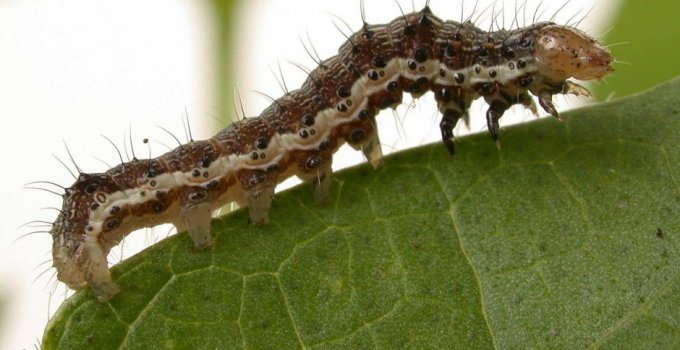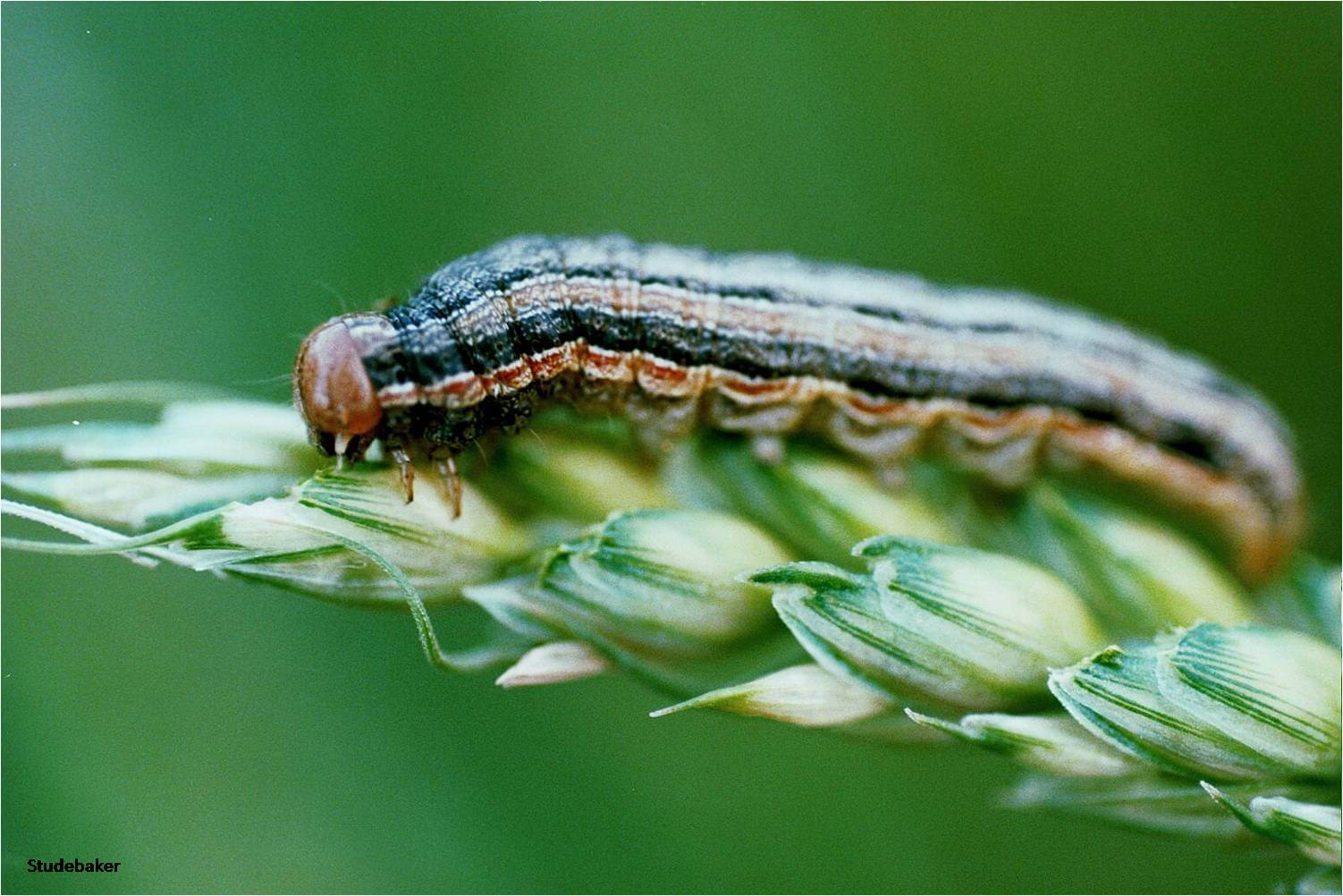1. Pod Borer (Helicoverpa armigera hunber )
They are the polyphagous pest. The adult moth is of 20 mm long and has brown color. They are active at night
Damage: The larva feed short time on tender leaves by scrapping green tissues and shift to flower buds and tender shoots.
Management: Helicoverpa spp. has many parasites & predators that give adequate control of this pest. In some areas use of pesticide results to increase in population through the reduction of these natural enemies.
Spray with monocrotophous 36% SL , chloropyriphos 20% EC, synthetic pyrethroids and deltamethrin 11% W/W EC ( Decis 380 g/L a.i/ha) and other at the time of flowering and early pod setting
2. Cowpea aphid (Aphis craccivora Koch ) 
Aphids are serious pest in all lentil growing areas. The adult aphids are dark colored aphids but the appendages are whitish with black tips.They are shiny black sometime with fine dusting of white powder.
Damage: Aphids feed on plant sap, disrupting the normal plant growth pattern including reduction in root and nodulation growth. At high Aphid densities, plants are deformed;stunted and seed set is reduced. A cowpea aphid does not produce toxins or other persistent effects once aphids are removed. Normal plant growth rates are resumed.
Management: Spray with Neem Oil 3000 ppm @ 2ml/l else spray with systemic or contact insecticides to protect susceptible crops. Systemic materials are often applied at planting including Dimethoae 30% EC (400 g a.i/l) at the rate of 0.8 l/ha.
3. Armyworm ( Spodoptera exigua hubner )
Armyworm (S. exigua) is a polyphagous pest. The adult moth body colour greyish brown, forewings and hind wings are semitransparent with a dark margin.
Damage: The larvae feed on the foliage and only severe infestation can defoliate the plants. The army worm rarely causes economic damage in lentil.
Management: Collect and destroy the caterpillar.Spray 500 ml of Dichlorovous 85 SL or 3 kg of carbaryl 50 WP or 1 liter of Quinalphos 25 EC in 500 liters of water per ha.
4. Cutworm ( Agrotis ipsilon hubnagel ) 
A.ipsilon is a cosmopolitan and a polyphagous pest. The adult moths are grey brown color, large in size with a wingspan of 40 mm. The forewings are light brown color and hind wings are creamy white with brown edges.
Damage: The larvae of cutworm cuts the blant during night and plant are seen fallen during day, sometimes they also carry the fallen plant to the holes where they hide during the day. Some species of A.ipsilon feed on the upper leaves before moving to the soil surface.
Management: Destroying the holes where they harbour. Deep ploughing of the field in between the crops.
Collect and destroy caterpillar mechanically.
Broadcast Bt mixed bait ( 2 gm Bacillus thuringiensis formulation with 1 kg of wheat bran) @ 10 kg of per ha.
5. Bud Weevil ( Apion arrogans wenck )
The bud weevil (A. arrogans) body length is 3 mm and the snout is longer than the body. They are long legs. Colors of adult weevil have dark blue elytra with black head, thorax, legs and abdomen.The species larvae colors are yellow and legless.
Damage: Adult weevils feed on lentil leaves making small holes but the larvae feed mostly bucks and flowers and the ovary is destroyed he larva cab be found inside the buds and which feeds on the developing seeds. The budweevil A.arrogans also transmit broad bean mottle virus (BBMV) in lentil.
Management: The serious infestation is not observed due to bud weevil. The crop rotation, destruction of damaged buds and use of natural enemies are the economic ways to control the weevil. If the population of weevils are high and infestation is more then the monocrotophos 36 SL @ 2 ml/ha is used to control the weevils.
